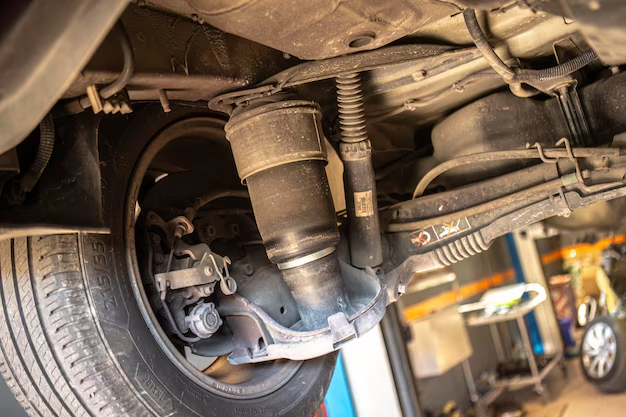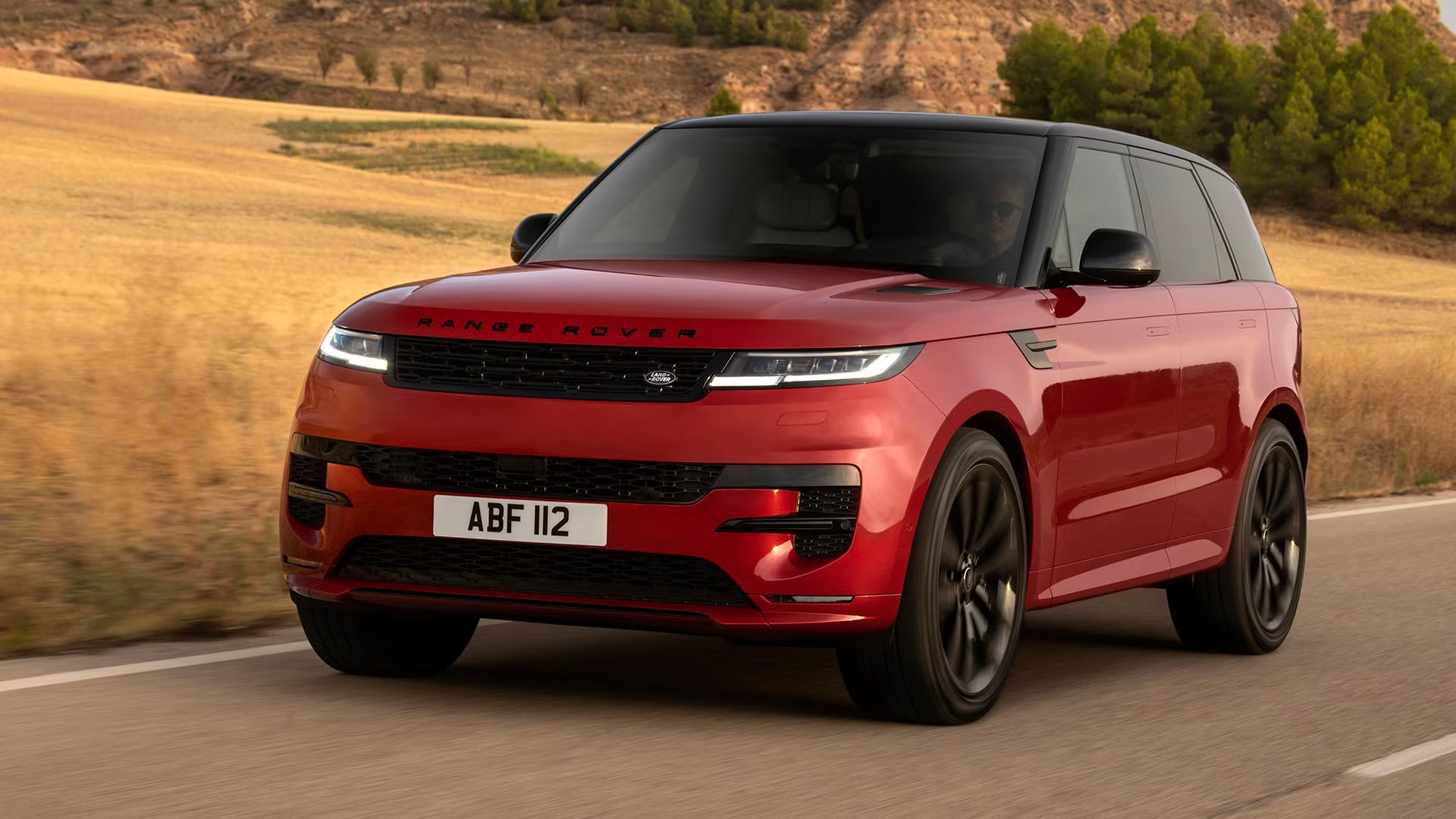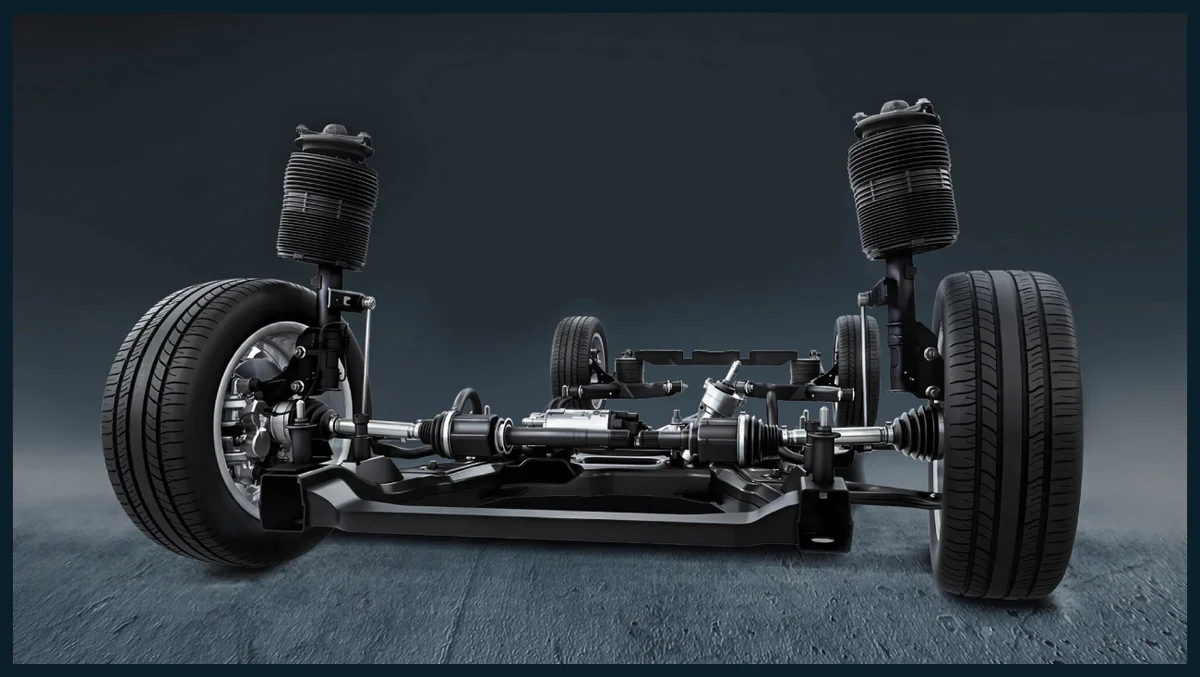In a world where luxury vehicles transcend mere transportation, offering a harmonious blend of elegance, performance, and sophistication, air suspension systems have emerged as a hallmark of comfort and technological advancement. These systems replace traditional coil springs with inflatable rubber airbags, enabling vehicles to dynamically adjust their ride height and stiffness, providing an unparalleled driving experience. This comprehensive guide will explore the intricate workings of air suspension, its advantages and drawbacks, maintenance essentials, and forthcoming advancements. Join us as we delve into the captivating world of luxury car air suspension systems.
The Essence of Air Suspension in Luxury Vehicles
Air suspension systems are revolutionizing how we perceive and experience luxury automobiles. By replacing conventional coil springs with adjustable airbags, these systems allow for adaptive changes in vehicle height and ride characteristics based on varying driving conditions, enhancing both performance and comfort significantly.
How Air Suspension Works
At the heart of air suspension systems lies a straightforward yet ingenious principle: compressed air. Each vehicle’s air suspension consists of several essential components:
- Airbags: These inflatable rubber bags replace traditional springs, dynamically inflating or deflating in response to real-time pressure readings to maintain optimal ride height.
- Air Compressor: This component fills the airbags with compressed air to achieve and maintain the necessary pressure, adjusting automatically based on the vehicle’s load and driving settings.
- Control Module: An electronic control unit (ECU) that continuously monitors driving conditions, making real-time adjustments to suspension settings for optimal performance.
- Air Tank: This storage unit maintains a supply of compressed air for the system, allowing it to function correctly without constantly running the compressor.
- Sensors: These elements monitor the vehicle’s height and load conditions, relaying signals to the control module to adjust the air pressure in the system accordingly.

Unfolding the Historical Context
The evolution of air suspension systems began in the early 20th century and gained momentum during World War II, primarily for military vehicles designed to navigate demanding terrains. The technology transitioned into luxury cars in the 1980s, with brands like Mercedes-Benz pioneering its adoption. Today, renowned manufactures such as Audi and BMW have recognized the benefits of air suspension, making it a defining characteristic of their premium models.
- Early Development: Initially used in military contexts, air suspension systems provided stability during rugged maneuvers.
- 1950s Adaptations: Transformations from traditional coil springs saw air suspension adapted for heavy-duty trucks, paving the path for lighter vehicles.
- Luxury Adoption: The 1980s marked a significant shift as luxury brands embraced air suspension, showcasing its comfort and capability in high-end cars.
Why Choose Air Suspension?
Luxury car owners are increasingly drawn to air suspension systems for several compelling reasons:
- Dynamic Adjustability: Air suspension enables vehicles to adapt their ride height for varying road conditions. For instance, SUVs can lower for better aerodynamics on highways or raise themselves to conquer obstacles.
- Enhanced Comfort: The ability of air suspension to absorb shock and vibrations leads to a smoother ride. Compared to traditional coil springs, airbags provide superior damping characteristics, creating a serene travel experience.
- Efficient Load Management: Particularly advantageous for families or businesses transporting various cargo, air suspension automatically adjusts to maintain consistent ride comfort despite added weight.
- Improved Driving Dynamics: In performance-oriented models, air suspension reduces body roll during cornering, allowing for an exhilarating yet comfortable driving experience.
The Drawbacks of Air Suspension Systems
Despite the allure of air suspension technology, it is not without its challenges and drawbacks:
- Complexity and Reliability: The intricate nature of air suspension systems introduces more points of potential failure. Components such as the air compressor may fail, leading to diminished ride quality.
- Higher Maintenance Costs: The advanced technology inherent in air suspension systems often results in higher repair costs compared to traditional suspension systems. The expense of parts, combined with the need for specialized technician training, can incur significant long-term ownership expenses.
- Performance Limitations: While air suspension excels in comfort, it may not always match the rigidity and feedback offered by traditional coil springs during aggressive driving maneuvers.
Maintenance Tips for Air Suspension Systems
To preserve the integrity and performance of air suspension systems, proper maintenance is paramount. Here are essential upkeep practices to ensure longevity and reliability:
- Regular Inspections: Routinely check the system’s air pressure and inspect the airbags for signs of wear to prevent potential issues before they escalate.
- Compressor Checks: Monitor the functionality of the air compressor, a critical component for maintaining optimal ride quality.
- Professional Servicing: Engage technicians who specialize in luxury vehicles to diagnose and repair any issues as soon as they arise.
- Software Updates: Keep the vehicle’s control module software up to date; modern systems often receive updates that can enhance response and performance.
- Avoid Overloading: Understand the weight limits of your vehicle to maintain ride quality and prevent undue stress on the air suspension system.

Upgrade Options for Enthusiasts
For luxury car owners looking to tailor their vehicle further, numerous upgrade options are available for air suspension systems:
- Performance Tuning: Software solutions can adjust suspension stiffness and ride height to match individual driving preferences.
- Aftermarket Components: Enthusiasts might consider higher-performance air springs or custom fittings designed to enhance the vehicle’s handling characteristics.
- Adjustable Damping: Incorporating adjustable damping systems allows drivers to fine-tune ride stiffness, achieving the perfect balance between comfort and handling responsiveness.
- Smart Technology Integration: Upgrading to smart air suspension systems can incorporate predictive algorithms, automatically adjusting settings based on the driver’s habits and terrain conditions.
The Future of Air Suspension Technology
The automotive landscape is continuously evolving, and air suspension systems are poised to remain at the forefront of luxury vehicle development. Emerging trends in this domain include:
- Smart Adaptive Systems: Future air suspensions may integrate AI technology to learn driving habits, automatically adjusting settings for optimized comfort and performance.
- Eco-Friendly Materials: As sustainability becomes a priority, advancements may arise using eco-friendly materials and manufacturing processes in air suspension systems.
- Integration with Autonomous Technology: Advanced air suspension will connect with autonomous vehicle technology, allowing for seamless adjustments based on real-time predictive data and driving conditions.
Personal Reflections on Air Suspension
In my journey through the captivating world of luxury vehicles, I have developed a deep appreciation for the elegance and sophistication air suspension contributes to the driving experience. I recall a picturesque drive in an Audi A8 fitted with this cutting-edge system—navigating through cityscapes with a flawless transition over bumps and irregularities, almost as if the car floated over the surface of the roads.
Under the enchanting glow of city lights, I was overwhelmed by the serene ambiance within the cabin. The air suspension effortlessly absorbed the harshness of the urban landscape, allowing me to indulge in a distraction-free journey. This reaffirmed my belief that comfort should not merely be an afterthought in the realm of luxury driving; it should be a fundamental tenet.
Conversing with fellow luxury car enthusiasts often reveals shared sentiments regarding their air suspension systems. These proud owners regard their vehicles as not merely machines, but as companions that enrich their travel experiences and foster a community of appreciation for fine engineering.
Conclusion
In essence, air suspension systems symbolize the beautiful synthesis of innovation and luxury, curating an automotive experience rooted in comfort without sacrificing performance. They stand testament to the evolution of automotive technology, reinforcing the identity of luxury vehicles as not just modes of transport, but extraordinary emotional experiences. With an understanding of their mechanics, benefits, and potential challenges, prospective owners will be well-equipped to navigate the nuanced journey of maintaining, upgrading, or purchasing a vehicle with an air suspension system.
For those residing in Delhi-NCR looking to ensure the pristine condition of their luxury vehicles, Drive In Motor Sports offers specialized services and unparalleled expertise in high-end automotive care. Located strategically in Gurugram, they can be contacted via +91-93195-31279 or through email at [email protected]. With precision and dedication guiding their services, they promise to preserve the luxurious sensation of a smooth ride for every journey ahead.
As you embark on the road ahead, let it serve as a canvas for luxurious travels, illuminated by the unmatched advantages of air suspension systems—where every drive becomes a resplendent art form.

